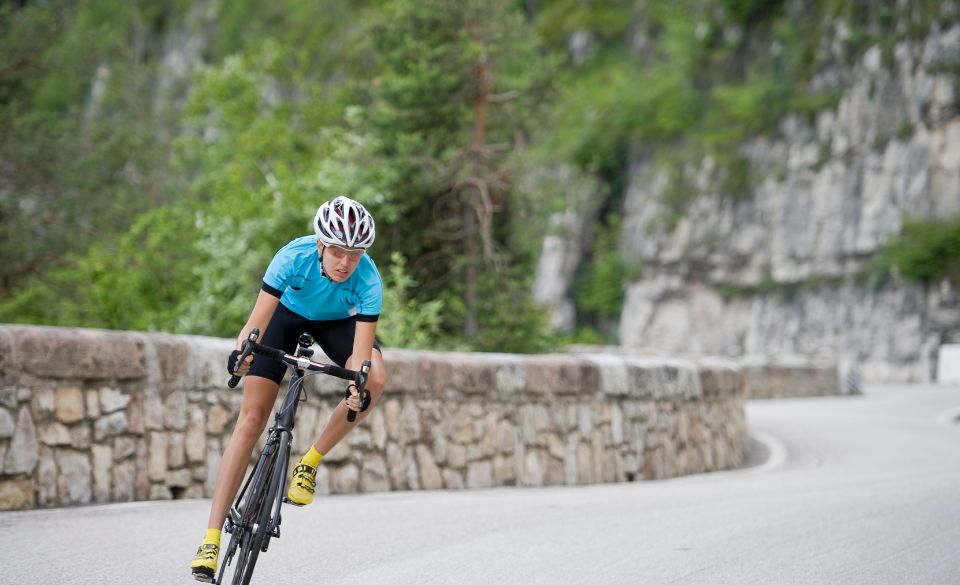
Why Does a Cyclist Bend or Lean During a Turn?
Page Contents
Cycling, with its graceful blend of motion and precision, is a beautiful sport to behold. One of the mesmerizing sights in cycling is when a cyclist gracefully leans into a turn, their body and bike seeming to defy gravity as they negotiate a curve. But have you ever wondered why cyclists lean or bend during a turn? It’s not just for show; it’s a fundamental aspect of physics, balance, and skill. In this article, we’ll delve into the science and mechanics behind why cyclists lean into turns and how it enhances their riding experience.
The Centripetal Force Conundrum
Imagine you’re riding your bike and approaching a curve in the road. As you steer into the turn, you naturally lean in the same direction. Why does this happen? It all comes down to physics and the concept of centripetal force.
Centripetal force is the force that keeps an object moving in a curved path and prevents it from moving in a straight line. When you’re cycling around a curve, the centripetal force required to keep you on that path is generated by the friction between your tires and the road. This force acts towards the center of the curve, pulling you into it.
Leaning for Balance
So, if centripetal force is pulling you into the turn, why do you need to lean as well? The answer lies in maintaining balance. When you lean into a turn, you shift your center of gravity towards the inside of the curve. This adjustment counteracts the centripetal force that’s trying to pull you outward.
Imagine riding a bike without leaning into a turn. As you steer into the curve, the force pushing you outward would lead to instability and a high risk of falling. Leaning, on the other hand, allows you to balance the opposing forces—centripetal force pulling you into the turn and your body’s tendency to continue in a straight line. The result is a smooth, controlled turn without wobbling or veering off your intended path.
The Role of Bike Geometry
The geometry of your bike also plays a significant role in this equation. Different types of bicycles have varying degrees of “trail,” which is the distance between the point where the front tire contacts the ground and the point where the steering axis intersects the ground. Bikes with greater trail tend to require more pronounced leaning into turns, as the trail assists in stabilizing the bike.
The Art of Countersteering
Another intriguing aspect of leaning into turns is the technique of countersteering. When you want to initiate a turn, especially at higher speeds, you briefly turn the handlebars in the opposite direction before leaning into the curve. This counterintuitive action shifts your bike’s weight and helps you initiate the lean smoothly. Once the lean begins, you’ll find that your bike naturally follows the curve, and you can maintain balance with minimal effort.
The Impact of Speed
One fascinating aspect of leaning during turns is the role that speed plays in this delicate ballet. The speed at which you’re cycling has a direct influence on the degree of lean required. When you’re moving at higher speeds, the centripetal force pulling you outward becomes more substantial. To counteract this force effectively, you need to lean further into the turn.
Conversely, at lower speeds, you won’t need to lean as much. The centripetal force is less pronounced, so your bike can negotiate the curve with a gentler lean. This adaptability is a testament to the cyclist’s ability to intuitively adjust their body position to match the conditions they’re riding in.
Advanced Techniques for Expert Cyclists
Experienced cyclists often take leaning and cornering to an art form. They master the intricacies of their bike’s geometry, fine-tune their countersteering techniques, and develop a keen sense of timing and balance. In competitive cycling, especially in disciplines like criterium racing, where tight corners are frequent, the skill of leaning into turns becomes a critical advantage.
Additionally, track cyclists who race on velodromes and fixed-gear bikes use a distinct form of leaning to navigate the banked curves of the track. Their lean is more extreme, and their expertise lies in maintaining a precise line while riding at high speeds in close proximity to other cyclists.
A Safety Measure
While leaning into turns might appear as a daring maneuver, it’s primarily a safety measure. By leaning, you ensure that you remain in control of your bike and avoid skidding or sliding out of the curve. Leaning allows you to execute turns with confidence, whether you’re cycling through city streets, descending a mountain pass, or participating in a competitive race.
Final Thoughts – Why Does a Cyclist Bend or Lean During a Turn?
The next time you take a curve on your bicycle, remember that leaning into the turn is not only a natural response but also a crucial technique to maintain balance and control. It’s a testament to the synergy between physics and human skill that makes cycling such a graceful and thrilling sport.
So, whether you’re a casual rider navigating a scenic route or a seasoned cyclist racing through challenging terrain, leaning into turns is your trusty ally.



